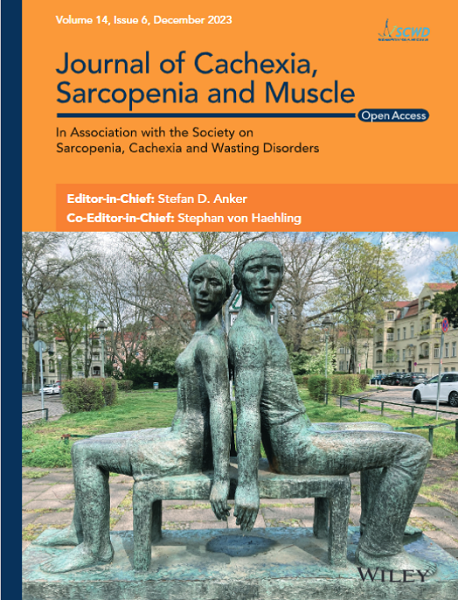Metagenomic Analysis Identifies Sex-Related Gut Microbial Functions and Bacterial Taxa Associated With Skeletal Muscle Mass
Abstract
Background
This study aimed to explore the association between gut microbiota functional profiles and skeletal muscle mass, focusing on sex-specific differences in a population under 65 years of age.
Methods
Stool samples from participants were analysed using metagenomic shotgun sequencing. Skeletal muscle mass and skeletal muscle mass index (SMI) were quantified (SMI [%] = total appendage muscle mass [kg]/body weight [kg] × 100) using bioelectrical impedance analysis. Participants were categorized into SMI quartiles, and associations between gut microbiota, functional profiling and SMI were assessed by sex, adjusting for age, BMI and physical activity.
Results
The cohort included 1027 participants (651 men, 376 women). In men, Escherichia coli (log2 fold change 3.08, q = 0.001), Ruminococcus_B gnavus (log2 fold change 2.89, q = 0.014) and Enterocloster sp001517625 (log2 fold change 2.47, q = 0.026) were more abundant in the lowest SMI compared to the highest SMI group. In contrast, Bifidobacterium bifidum (log2 fold change 3.13, q = 0.025) showed higher levels in the second lowest SMI group in women. Microbial pathways associated with amino acid synthesis (MET-SAM-PWY: log2 fold change 0.42; METSYN-PWY: log2 fold change 0.44; SER-GLYSYN-PWY: log2 fold change 0.20; PWY-5347: log2 fold change 0.41; P4-PWY: log2 fold change 0.53), N-acetylneuraminate degradation (log2 fold change 0.43), isoprene biosynthesis (log2 fold change 0.20) and purine nucleotide degradation and salvage (PWY-6353: log2 fold change 0.42; PWY-6608: log2 fold change 0.38; PWY66-409: log2 fold change 0.52; SALVADEHYPOX-PWY: log2 fold change 0.43) were enriched in the lowest SMI in men (q < 0.10). In women, the second lowest SMI group showed enrichment in energy-related pathways, including lactic acid fermentation (ANAEROFRUCAT-PWY: log2 fold change 0.19), pentose phosphate pathway (PENTOSE-P-PWY: log2 fold change 0.30) and carbohydrate degradation (PWY-5484: log2 fold change 0.31; GLYCOLYSIS: log2 fold change 0.29; PWY-6901: log2 fold change 0.27) (q < 0.05).
Conclusions
This study highlights sex-specific differences in gut microbiota and functional pathways associated with SMI. These findings suggest that gut microbiota may play a role in muscle health and point toward microbiota-targeted strategies for maintaining muscle mass.

 求助内容:
求助内容: 应助结果提醒方式:
应助结果提醒方式:


